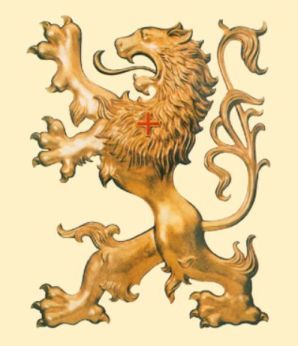|
Plinio Corręa de Oliveira
Part I And the Mandate of the Hierarchy
|
|
|
The Origin of Catholic Action's Present Organizations The first matter we should examine is the juridical character of Catholic Action. Before the pontificate of Pius XI, the expression "Catholic action" was used to designate the lay apostolate in general and all efforts developed in this field for the re-Christianization of the individual, the family, and society. Thus, all the organizations dedicated to this task could legitimately call themselves works of Catholic action. During the pontificate of Pius XI, organizations with the special purpose of systematically promoting and organizing the lay apostolate were instituted and the Holy See gave these new organizations the name Catholic Action. Consequently, a great number of scholarly authors began to draw a distinction between the new organizations called "Catholic Action"—the only ones with the right to use this noble title with capital letters—and "Catholic action," the general designation for activities of the lay apostolate that preceded the foundation of Catholic Action and for the apostolic organizations that came afterwards but remained outside its fundamental structure. Juridical Character of Catholic Action: the Mandate of Catholic Action What is the juridical character (1) of the Catholic Action organizations? It is usually affirmed that upon creating these new and important organizations of lay apostolate and convoking all the faithful to join them, Pius XI formulated an unmistakable and solemn mandate that bestowed on the laity enrolled in Catholic Action a new position within the Church. Notions about the Mandate Let us explain this doctrine better. As we know, Our Lord Jesus Christ ordered Peter and the other Apostles to continue His work of preaching the Good News to all peoples, introducing them, by Baptism, into the life of grace, and governing them in this life until they attained eternal blessedness. The imperative expression of the will of the Divine Master—which constitutes a command, in Latin mandatum—entailed for the Twelve and their successors an obligation, a responsibility, a task and, at the same time, a power. Indeed, obliged by the Divine Master to preach the Truth, administer the sacraments, and govern souls, everything they were to do in carrying out this task they would do by virtue of the Redeemer's will, which made them His authentic representatives and ambassadors, envoys invested with all the authority that Our Lord Himself rightfully and properly had to carry out His earthly mission. Thus, this "commandment" to carry out the apostolate is properly an imperative procuration that makes the Apostles true "mandataries." Ecclesiastical and Civil Meaning of "Mandate" We insist, however, on a noteworthy difference: While the procurations currently used in civil life are freely exercised by the mandatary, who can resign at any moment, the mandate given to Saint Peter and the Apostles was imperative and imposed a double obligation, that is, first to accept the procuration and then to exercise it according to the will of the Divine Commander. The powers received by Saint Peter and the Apostles were transmitted to the Supreme Pontiff and the ecclesiastical hierarchy from century to century and make the Church's present rulers legitimate successors of the Twelve. Hierarchical Character of Catholic Action Deduced from the Mandate Having outlined these preliminary notions, we now turn our eyes to the history of the great and luminous pontificate of Pius XI. Many authors of works on Catholic Action emphasize that the pressing circumstances in which the Church then found herself—and which unfortunately are far from being over—led the Pontiff to: 1. order all laymen to engage in the work of the apostolate; 2. found an organization within whose framework and under whose internal hierarchy all of this work was to be done; 3. and, implicitly, give this organization the same obligation, impose on it the same task, charge, or responsibility imposed on each of its members. Between these facts and the mandate given by Our Lord Jesus Christ to the hierarchy, two points of contact were noted: 1. of analogy: The situations were similar, because the hierarchy had proceeded in regard to Catholic Action in a way that evidently called to mind Our Lord's attitude when He invested the Twelve with authority; 2. of participation: The hierarchy transmitted powers to Catholic Action. What powers? Obviously, none originating from any other source than the powers the hierarchy itself had received. The powers or functions transmitted would be, therefore, of a hierarchical nature so that they "participated in the hierarchical apostolate of the Church," according to the definition of Pius XI. Concrete Consequences: We ask our readers' forgiveness for the monotony of these enumerations, but there is no better process for shedding as much light as possible on subjects that are inherently subtle and complex and that easily induce confusion in minds. We will now enumerate, therefore, the practical consequences that would result from everything that has been described: a) Regarding Other Lay Organizations 1. When creating a special organization for the exercise of this mandate, Pius XI made very clear that this mandate did not affect preexisting apostolic associations, but only the juridical structure of Catholic Action. 2. This being so, only by enrolling in this entity and acting in union with it do the faithful execute the task spoken of by the Pontiff, and only a member of Catholic Action, therefore, has a mandate. 3. No association apart from the so-called fundamental organizations of Catholic Action has, therefore, a mandate, nor do any of the members of such associations who have not personally enrolled in one of the aforesaid fundamental organizations. 4. It would follow from the mandate granted to the fundamental organizations of Catholic Action that all the other preexisting associations, as long as they work towards any of the ends of Catholic Action, would be surviving on ground granted to the latter, which is tantamount to affirming that they should disappear. 5. And since the Holy See wished to proceed in a fatherly manner, by not applying the death penalty to formerly well-deserving entities, it has suggested, while at the same time occasionally praising them, that their era is over, thus indicating to zealous and intelligent laymen—for whom "a word to the wise is sufficient"—that they avoid joining and working in such associations, now already in a pre-cadaverous state. 6. Some concede that associations with a strictly religious character could survive since, as they say, Catholic Action does not concern itself with piety; others understand that Catholic Action suffices for everything, and that even these associations are entirely superfluous and should vanish: if "non sunt multiplicanda entia sine necessitate," (2) their raison d'ętre has ceased. 7. Both currents believe, nevertheless, that apostolate should be done only by Catholic Action, and that until such other associations of apostolate expire they should carry out modest, subdued, and inexpressive activities, as only these are compatible with the process of one who is slipping toward the grave. 8. Some do not go that far, believing that the associations predating the present juridical structures of Catholic Action should neither disappear nor abandon the apostolate, but rather occupy with their deeds and works an entirely secondary position: since they are not exercising a "mandated" apostolate, they should harvest only the rare shafts of wheat that the sickles of the accredited harvesters, burdened with an excessive workload, leave behind on the Father’s field. b) Regarding the Hierarchy These are the concrete consequences which, in regard to the relations between Catholic Action and other Catholic associations, logically or illogically result from the doctrines we have been describing. However, their effects in the field of relationships between Catholic Action and the hierarchy are even more important: 1. Some believe that the word "participation" must be understood in its most exact and strict meaning and that the mandate granted by the Holy Father Pius XI incorporated the members of Catholic Action into the hierarchy of the Church. 2. Others understand that the members of Catholic Action do not participate in the hierarchy but in the apostolate of the hierarchy; in other words, that while not belonging to the hierarchy they exercise functions of a hierarchical character as, for example, a priest who receives the power to administer the Sacrament of Confirmation exercises episcopal functions without, however, being a bishop. 3. Many commentators have based themselves on one or both of these opinions to maintain that Catholic Action was invested with such authority, that the laymen affiliated with it are dependent directly on the bishops, from whom they received a mandate, and not in any way on the parish priests or ecclesiastical assistants, who have no power to confer hierarchical office. There were some in Italy who maintained that since the mandate had been granted by the Supreme Pontiff, the members of Catholic Action should be subject to him alone and not to the Episcopate and should receive their orders from the Central Roman Board, which functions under the immediate authority of the Holy Father. We insist further on two other important consequences that are usually drawn from this: c) Regarding the Organization and Methods of Apostolate of Catholic Action 1. The mandate imparts to the apostolate of Catholic Action an irresistible fecundity, not in the figurative and literary sense of the word but in its proper and etymological sense. 2. Thus endowed with invincible resources for the sanctification of its own members, as well as for the attraction of the faithful foreign to it or even of infidels, Catholic Action should have methods of internal organization and exterior apostolate entirely different from everything that has been practiced until now. Leaving for later chapters these two latter topics and the problem of relationships between Catholic Action and other organizations, let us address the juridical essence of Catholic Action and its relationship with the ecclesiastical hierarchy. Important Observations We would not like to close this chapter however, without emphasizing that it is extremely difficult to outline the existing errors regarding Catholic Action. As they are often the fruit of passions, now more, now less lively, there are a large number of intermediary positions that can be taken. For this reason, we attempt to point out, as completely as possible, only the most characteristic positions so that once these are refuted the intermediary ones crumble of their own accord. Notes: 1) Whenever we use the expression "juridical character," we do so in the sense of "formal constitutive." 2) “Do not multiply entities when not necessary.” |
|

